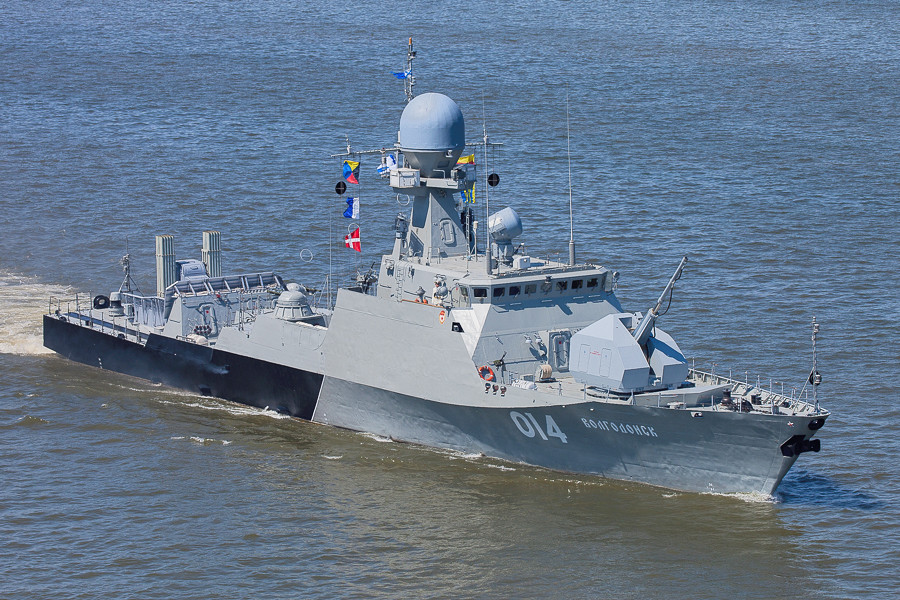On December 2, the Russian Ministry of Defense announced that its Air Force had successfully carried out the test launch of a new missile of the Russian missile defense system.
Scary Images Of Russia’s Nuke-Capable Bombers, Tu-160, T-95, Surface From Engels-2 Airbase; ‘Massive Strikes’ On Ukraine Imminent?
NASAMS vs PATRIOT: Why Ukraine ‘Desperately Wants’ Patriot Missile Systems When NASAMS Have Achieved 100% Kill Rate?
The launch was conducted from the Sary-Shagan test site, located on the territory of the Republic of Kazakhstan. The combat crew of the air defense-missile defense troops conducted the test.
In a statement, the Russian MOD said, “at the Sary-Shagan training ground of strategic missile forces (Republic of Kazakhstan) military calculation of the air and missile defense forces of the Russian Air Force, another test launch of a new missile of the Russian missile defense system (PRO) was successfully carried out.”
Major General Sergey Grabchuk, commander of the Air Force missile defense unit, said that following several tests that proved the inherent qualities, combat calculations accomplished the mission, hitting a conditional target with a predetermined precision.
WATCH: #BNNRussia Reports
The Russian Aerospace Forces have completed the launch of a new anti-missile missile defense system at the Sary-Shagan test site in #Kazakhstan, according to the Ministry of Defense (@mod_russia). pic.twitter.com/2iLOl0o6PT
— Gurbaksh Singh Chahal (@gchahal) December 1, 2022
The missile defense system is in service with the Russian Air force. The system is designed to defend against air-space attacks. Footage of the missile launch was also made available by the MOD.
The footage published by the Ministry of Defense shows how the missile defense system is transported to the launch facility, how the complex is put into combat readiness, and how it is fired. The anti-missile launch is shown from several angles.
However, the Ministry did not reveal the missile’s name or anti-missile defense system. The Sary-Shagan test site, established in 1956, carries out work on strategic anti-aircraft defense, anti-ballistic missile defense, and anti-satellite systems.

The recent test comes as Russian authorities have prohibited public discussion on a wide range of non-classified military topics, which critics claim would effectively prevent the public from acquiring critical information about the Armed Forces.
Information that is not deemed a state secret but can be utilized by foreign powers, organizations, and citizens against Russia’s security is listed in the 60-point Federal Security Service (FSB) order, which goes into effect on December 1.
Meanwhile, on October 31, the upgraded Russian self-propelled anti-tank missile system “Kornet-D1” completed most of its preliminary tests, and preparations are currently underway for state tests.
During preliminary tests, the Kornet-D1 completely complied with the tactical and technical requirements of the Russian Federation’s Ministry of Defense.
In April, Russia’s newest anti-aircraft missile defense system, the S-500 (Prometheus), was revealed to have already entered mass production. It is expected to be the foundation for the country’s aerospace defense system.
With a 600-kilometer range, the S-500 Prometheus is a new-generation surface-to-air missile system. It is a universal high-altitude interception complex with improved anti-missile defense capabilities intended to intercept and eliminate aircraft, hypersonic cruise missiles, and intercontinental ballistic missiles.

Russian Missile Corvette Test-Fires Artillery Guns
On December 1, the Baltic Fleet’s press office announced that the Project 21631 Buyan-M class missile corvette Grad armed with Kalibr and Oniks cruise missiles struck aerial and naval targets with Naval guns in the Baltic Sea.
With its operational 100mm and 30mm artillery cannons, “the missile corvette Grad carrying out the program of state tests in the Baltic Sea conducted firings against naval and aerial targets,” the press office said in a statement.
The crew will also exercise several air defense measures with aircraft from the Fleet’s naval aviation flying over the battleship. The state tests for the warship include checking the functionality of all its assemblies, systems, mechanisms, navigational equipment, and radio-technical apparatus.
The shipbuilders’ delivery team, the corvette’s crew, and state commission members are working together to conduct the maneuverable and speed trials. According to the press office, the tests are intended to thoroughly examine the newly constructed ship’s quality and compliance with its planned characteristics.

“After completing the trials at naval ranges and inspecting the ship, a naval flag will be hoisted on it, and the ship will enter service with the Baltic Fleet,” the statement added. Since 2010, the Zelenodolsk Design Bureau has produced missile corvettes under Project 21631 for the Russian Navy.
These corvettes are multipurpose river/sea ships with radio-technical, anti-saboteur, anti-aircraft, and advanced artillery weaponry. The waterjet engine fitted on these ships allows them to undertake combat operations in shallow waters.
The Russian Navy said that the shipborne 30mm automated artillery gun can destroy enemy aircraft, helicopters, and other aerial attack weapons while striking small-size naval and coastal targets positioned a long distance from the coast.
- Contact the author at ashishmichel(at)gmail.com
- Follow EurAsian Times on Google News




